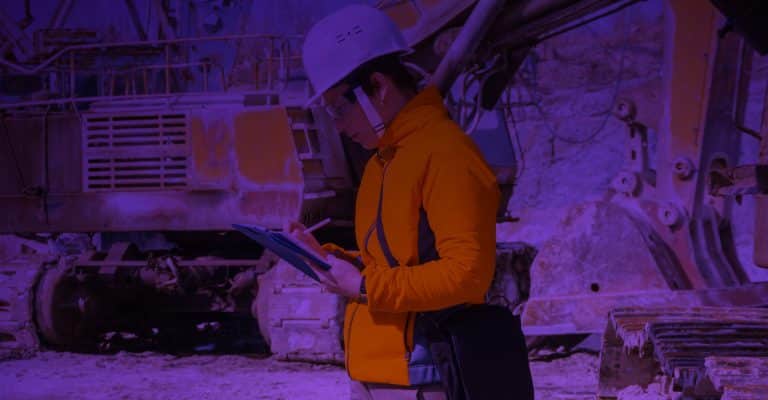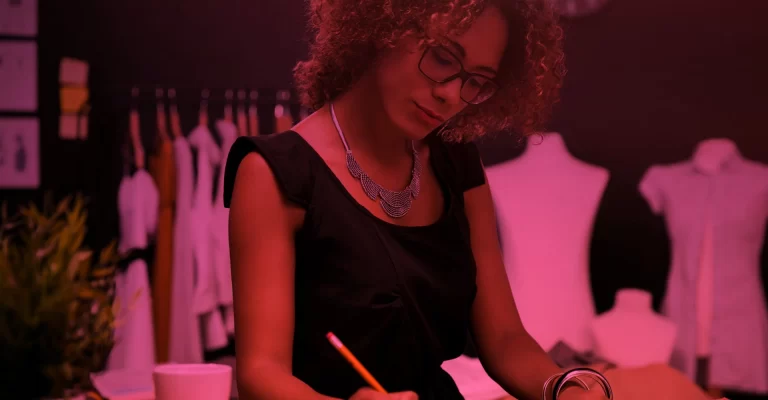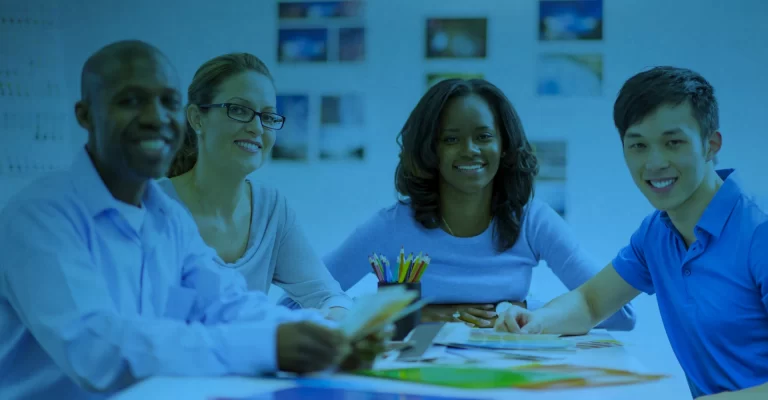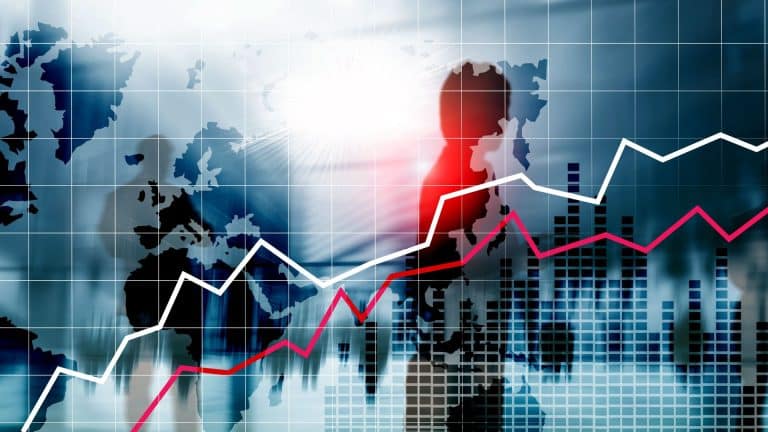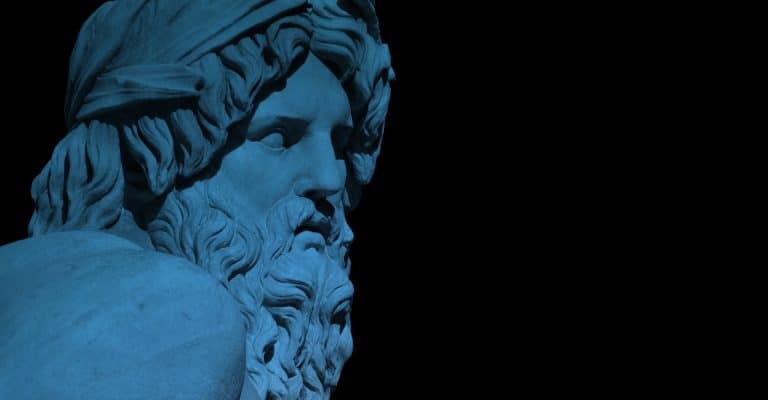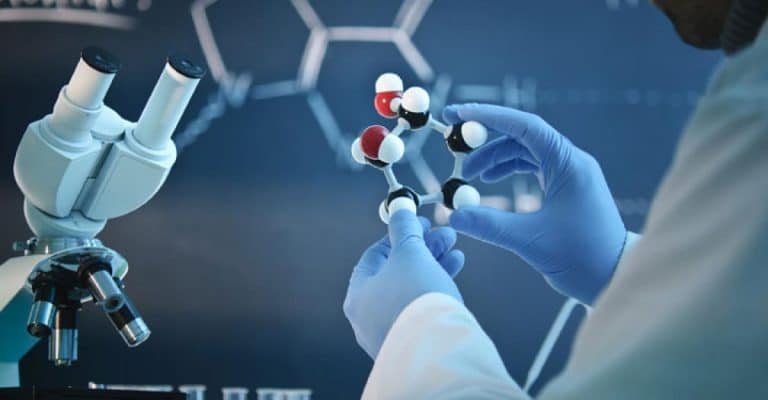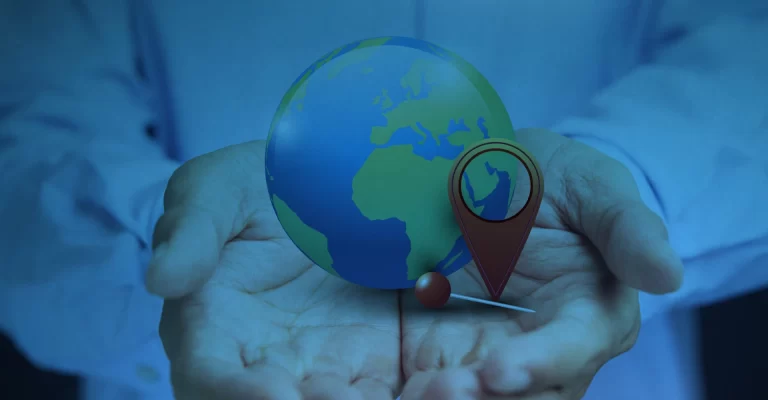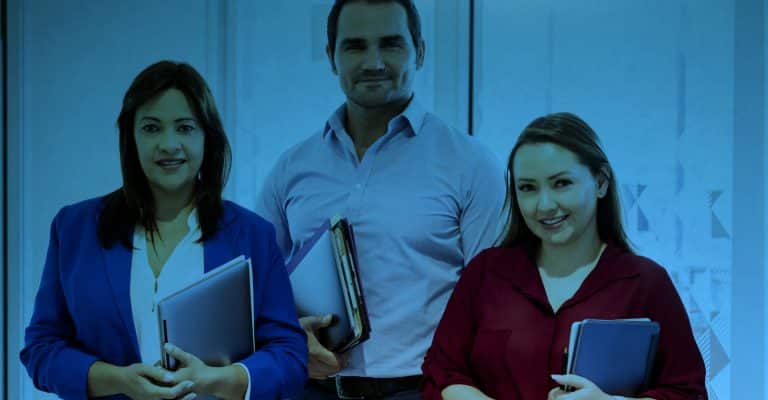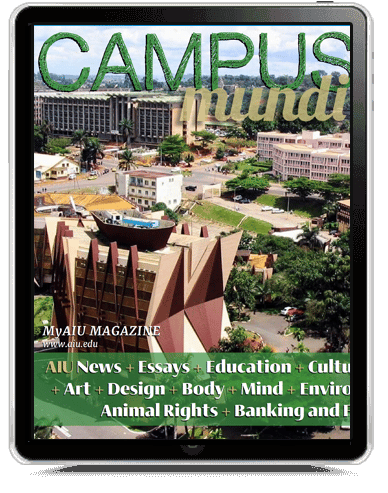

AIU News + Essays + Education + Culture + Science + Technology + Art + Design + Body + Mind + Environment + Human Rights + Animal Rights + Project Management + About AIU
Fighting ebola virus in Uga

OCTOBER 8, 2022. One of our students, Mathew Tut Moses Kol, is currently in the field supporting the government of Uganda in their fight against Ebola Virus Disease as part of Africa CDC technical team. Africa CDC is a specialized technical institution of the African Union established to support public health initiatives of Member States and strengthen the capacity of their public health institutions to detect, prevent, control and respond quickly and effectively to disease threats. Ebola virus disease (EVD) is a severe, often fatal, illness originally transmitted to humans from wild animals (such as fruit bats, porcupines and nonhuman primates) and then transmitted from human to human through direct contact with the blood, secretions, organs or other bodily fluids of an infected person. It can also be transmitted through surfaces and materials (e.g. bedding, clothing) contaminated with these fluids. The virus was first discovered in 1976 in the Ebola River region of Congo. Mathew Tut Moses Kol is about to complete a Doctorate program with a major in Public Health at AIU.
30 more spots at Graduation Ceremony

AIU wants to inform you that Registration for your 2023 Graduation continues and we have open 30 more spots. In order to participate you need to complete the following requirements by October 31st: • Fill out registration form on your student page. (Physical Graduation Ceremony). Remember it’s mandatory. • Complete all academic requirements by October 31st. Make sure you complete Phase IV documents. • Complete all financial requirements by October 31st. Make sure you pay your program in full including your graduation documents. • Pay the $125 participation fee by October 31st (participation fee will increase with time). • Upload your video testimonial. (has to be a one minute video (not selfie) explaining what AIU means to you. • Confirm number of guests. Maximum of 4, each guest has a cost of $75 at this moment. We look forward to sharing your accomplishments and your innovative vision. Reserve your spot now! https://wp24.aiu.edu/securelogin.html
17 TH INTERNATIONAL CONFERENCE ON Design Principles & Practices

Call for Papers This Conference will be held 29–31 March 2023 at Polytechnic Institute of Lisbon, Lisbon, Portugal. We invite proposals for paper presentations, workshops/ interactive sessions, posters/ exhibits, colloquia, focused discussions, innovation showcases, virtual posters, or virtual lightning talks. 2023 Special Focus: “New agendas for design: principles of scale, practices of inclusion” Theme 1: Design education. Theme 2: Design in society. Theme 3: Designed objects. Theme 4: Visual Design. Theme 5: Design management and professional practice. Theme 6: Architectonic, spatial, and environmental Design. Become a Presenter: 1. Submit a proposal 2. Review timeline 3. Register Regular proposal deadline December 29, 2022 Regular registration deadline February 28, 2023 Visit the website: https://designprinciplesandpractices. com
Graduated with Distinction

Hector Ivan Rodriguez
Doctor of Science
Statistics
DISTINCTION
Jelena Spirovski Biberdzic
Master of Science
DISTINCTION
Colin Neil Gosine
Doctor of Business Administration
Leadership in Business Administration
Psychology
OCTOBER, 2022. This graduate student completed the majority of the requirements to obtain honors, which included a 4.0 GPA, published works, recommendation from their advisors, patent a product, etc. Congratulations!
CUM LAUDE
Rebeca Emperatriz Vega Rodriguez
Bachelor of Science
Psychology

Bachelor of Arts
Art History
Argentina
Emmanuel Onyebuchi Abugu
Doctor of Philosophy
Accounting
Canada
Felipe Loká Ritope
Certificate of Business Administration
Business and Economics
Equatorial Guinea
Byron Ariel Pérez Marroquín
Bachelor of Business Administration
Business Administration
Guatemala
José Roberto Barrios Barrios
Bachelor of Business Administration
Business Administration
Guatemala
Milton Arnoldo Cordón Urrea
Bachelor of Business Administration
Business Administration
Guatemala
Janvi Doshi Sutaria
Doctor of Philosop hy
Psychology
India
Paulo Junta Jornão
Bachelor of Science
Electrical Engineering
Mozambique
Karsten I. Mensah
Bachelor of Business Administration
Business Administration
Nigeria
Jelena Spirovski Biberdzic
Master of Science
Psychology
Serbia
Colin Neil Gosine
Doctor of Business Administration
Leadership in Business Administration
Trinidad and Tobago
Hector Ivan Rodriguez
Doctor of Science
Statistics
Argentina
Abdou Mahamane
Master of Social and Human Studies
Conflict Resolution and Peace Building
Chad
Yonas Haile Habte
Master of Business Administration
Business Administration
Eritrea
Eynnar Sussely Ramírez Aguirre
Bachelor of Business Administration
Business Administration
Guatemala
Josué R. Helaman Lucas Eguizabal
Bachelor of Business Administration
Business Administration
Guatemala
Miriam Juárez de Cospín
Bachelor of Business Administration
Business Administration
Guatemala
Stacy-Ann Monalesia Gayle
Master of Education
Educational Administration
Jamaica
Oladimeji Isiaka Olayinka
Doctor of Philosop hy
Public Health
Nigeria
Pedro A. Gallardo M. Junior
Bachelor of Science
Civil Engineering
Panama
Mohamed Daud Omar
Master of Science
Public Health
Somalia
Erol Memişoğlu
Bachelor of Science
Electronics and Communication Engineering
Türkiye
Doctor of Education
Distance Learning
Argentina
Sergio Luis Gonzalez Bello
Bachelor of Agriculture Engineering
Plant Physiology
Colombia
vLionel Sama Enga
Doctor of Business Administration
Business Administration
Germany
Gerardo Rodrigo Ventura Cano
Bachelor of Business Administration
Business Administration
Guatemala
Juan Fernando Juracan Argueta
Bachelor of Business Administration
Business Administration
Guatemala
Ricardo José Morales Fernández
Bachelor of Business Administration
Business Administration
Guatemala
Michael Rees
Doctor of Philosop hy
Educational Psychology
Jersey, Channel Islands
Adewale Akanni Ojo
Doctor of Philosophy
Transportation Management
Nigeria
Jesus Rivera Licla
Master of Science
Environment and Sustainable Development
Peru
Suliman Bah
Master of Science
Renewable and Sustainable Energy
South Sudan
Muhammad Ragheb El-Sergani
Master of Science
Business Administration
United Arab Emirates
Pretty N. Nkomba-Ntsosa
Master of Science
Psychology
Botswana
Amata Mutiri Bwando
Certificate of Translation
Translation and Interpretation
Congo (DRC )
Alejandra Estefani Figueroa Gómez
Bachelor of Business Administration
Business Administration
Guatemala
Guisela M. Estrada Guerra De Soto
Bachelor of Business Administration
Business Administration
Guatemala
Juan Manuel García Amaya
Bachelor of Business Administration
Business Administration
Guatemala
Sandra Patricia García Coronado
Bachelor of Business Administration
Business Administration
Guatemala
Mannete Leetoane Khotle
Master of Psychology
Industrial and Organizational Psychology
Lesotho
Egbegi A. Neville
Bachelor of Science
Construction Technology
Nigeria
Marie Oquendo López
Doctor of Marketing
Marketing
Puerto Rico
Lokabang Elizai Athanasio Woja
Master of Science
Nutrition
South Sudan
Juan de la Cruz Paz Villarreal
Bachelor of Public Administration
Public Administration
USA
Find More Graduates

Testimonials
FIND MORE TESTIMONIALS FROM A I U STUDENTS HERE: https://wp24.aiu.edu/Testimonials.aspx

Gyanesh Kumar
Doctor of Business Administration
July 20, 2022

Said Abdillaahi
Bachelor of Public Administration
July 21, 2022

Guei Ounleu Gerard
Master of International Relations
July 22, 2022

Mark Carpenter
Bachelor of Holistic Education
August 1, 2022
Learning, learning and learning
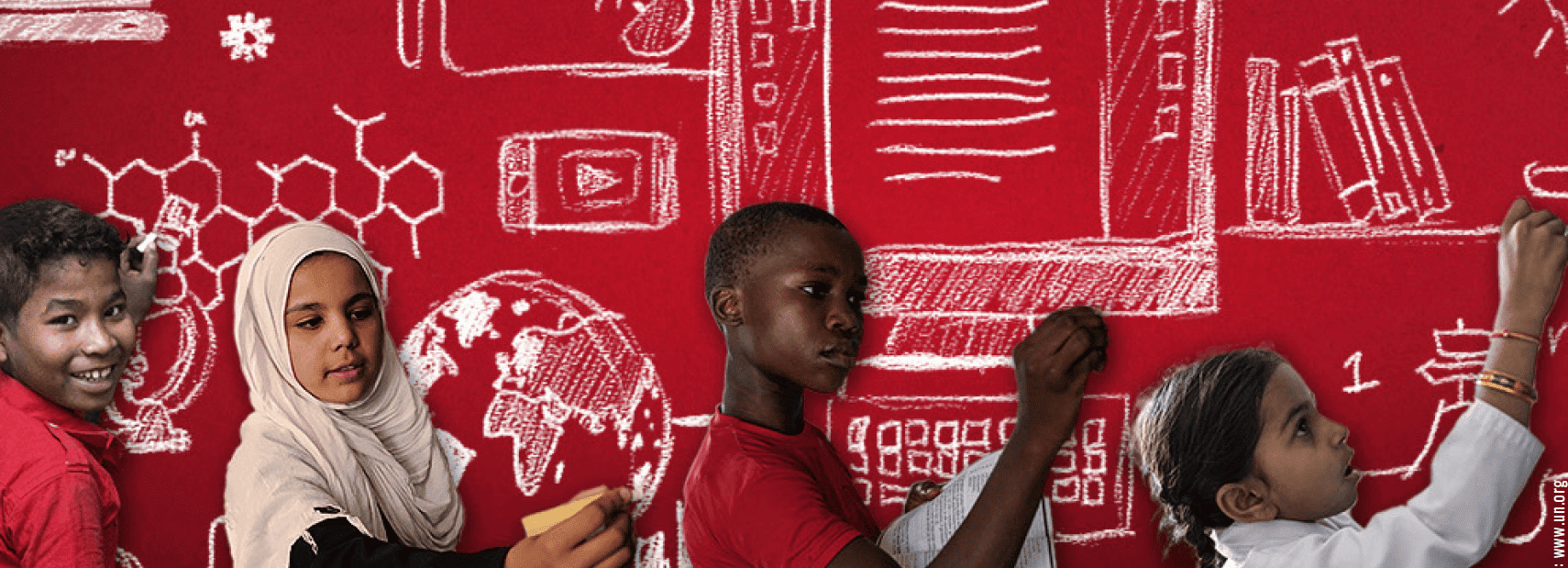
We are living in a world we never thought would come: climate change at its peak, lack of food and poor education. A high percentage of the inhabitants of this planet wants and wants goods and more goods: it’s the society of having. The vast majority of human beings think that just by having they have already achieved happiness. Analyzing these three aspects, the conclusion is that the basis of everything is education. If you have education, if you learn: 1. We obtain the knowledge of what our planet is for the life of all beings. 2. We learn what food is and how to structure livestock, agriculture and fishing. The United Nations (UN) is working very hard on the aforementioned aspects: climate change, food and education. Regarding climate change, the last Summit, COP26, Conference of the Parties, was held from October 31 to November 12, 2021, in Glasgow, Scotland, United Kingdom. https://www. un.org/es/climatechange/cop26 It aimed to: 1. Keep global warming at 1.5 Celsius.
2. Establish the regulation of the Paris Agreement referring to the maintenance of global warming at 1.5 Celsius.
3. Create collaboration between Governments, Companies and Civil Society to generate agreements that contribute to the well-being of human beings and to the life of planet Earth. The minimum of this Conference of the Parties seems to be that every day they are further from being reached: we observe more fires, famine in regions of the planet; specifically Asia and Africa and education with serious problems for better learning methods and to include all citizens in the areas that each group needs and in the new general knowledges: it’s necessary to generate interest in education for life. UNESCO – United Nations Educational, Scientific and Cultural Organization, a specialized agency of the UN, held a Summit at the same time as the seventy-seventh —77th— period of sessions of the United Nations General Assembly from September 20 to 26, 2022. The Summit was called:
Transforming Education. UNESCO 2022 https://www.un.org/ es/transforming-education-summit UNESCO has been working on the problem of education adding the situation generated by the 2019 coronavirus pandemic. The problem is centered on three questions: 1. What are we doing now in education that should continue? 2. What are we doing today in education that should be abandoned?
3. What needs to be reinvented in education? UNESCO 2022 https://es.unesco. org/futuresofeducation/tres-preguntas UNESCO considers education as the best renewable resource of humanity. Studying is living. What do you do in a world where there is something new every day and there is no interest in knowing why? If you are studying, take interest in what you do every day because it means being in this world with an open field to feel better and better because you can decide where you want to go. Consequence of the lack of education or little interest in it’s the global political and economic situation. Globally we see governments and governments that don’t meet the minimum needs of the population of those who have the least.
It seems that these governments are focused on profiting and letting those with more resources get richer every day. We live the war of those who own the world’s wealth between those who want dirty energy and those who consider that the planet Earth, our home, must be cared for so that everyone’s life is possible; they are the ones who think that energy should be clean. Education is strongly related to clean energy and dirty energy because voters, in countries where clean elections are enjoyed, choose their rulers according to their knowledge of general aspects of well-being. Now we are witnesses of elections that are held to punish this party or the other without considering that those who will suffer the consequences are all the citizens who elected them and those who didn’t. Then we see the suffering of the population and to see who we elect now. Together with the crisis of climate change, we are experiencing the crisis of politics. If we have a political crisis, it’s very difficult to reach global agreements for better education. The deficiency in education also generates problems in the economy because the training that human beings must have as an active population is less every day.
The human beings needed for production don’t have the skills that the industry needs. Education and politics go hand in hand. Education and Economy go hand in hand. How to break the circle in which we are living? To the circle that we mentioned we must add the undeclared wars. We also have the new world order that will result from the war between Ukraine and Russia. Peace is necessary for education and for the economy. What we are witnessing is that we will have a new energy order when we have peace between Ukraine and Russia.
We will also have clean energy in more regions of the world starting with the changes in Europe. We also see that the world organizations established after the Second World War will come out stronger because every effort is being made so that the agreements generated after this war are respected by all. What is the role of education? Education is the basis of understanding because you have all the elements of reasoning to obtain valid and real results. Education has to be the best resource of humanity to be able to live with the necessary goods. Education has to be organized based on peace and coexistence. Education has to be for everyone if we want a fair society. Education should be according to science. Education should be according to human values. Education should be far from politics. Studying at Atlantic International University (AIU), you take advantage of your time to get your degree. By studying at AIU you get the motivation to study for life. Learning something every day is the price to be happy. Learning, learning today and always and the world will be better for you and for every human being. Listen, listen with passion to everything that science shows and demonstrates.
BIBLIOGRAPHY. UNESCO. Futuros de la educación. Retrieved from: https://es.unesco.org/futuresofeducation/tres-preguntas • UNESCO. Cumbre sobre la transformación de la educación. Retrieved from: https:// www.un.org/es/transforming-education-summit • Ministerio de Educación y Formación Profesional. España: Madrid. Retrieved from: https://www. educacionyfp.gob.es/dam/jcr:7c5ae1a8-4258-4de5-836a-4263f500b6d4/notacontexto. pdf • ONU. Conferencia de las Partes- COP26. Retrieved from: https://www.un.org/es/climatechange/cop26
What we should remember about the future
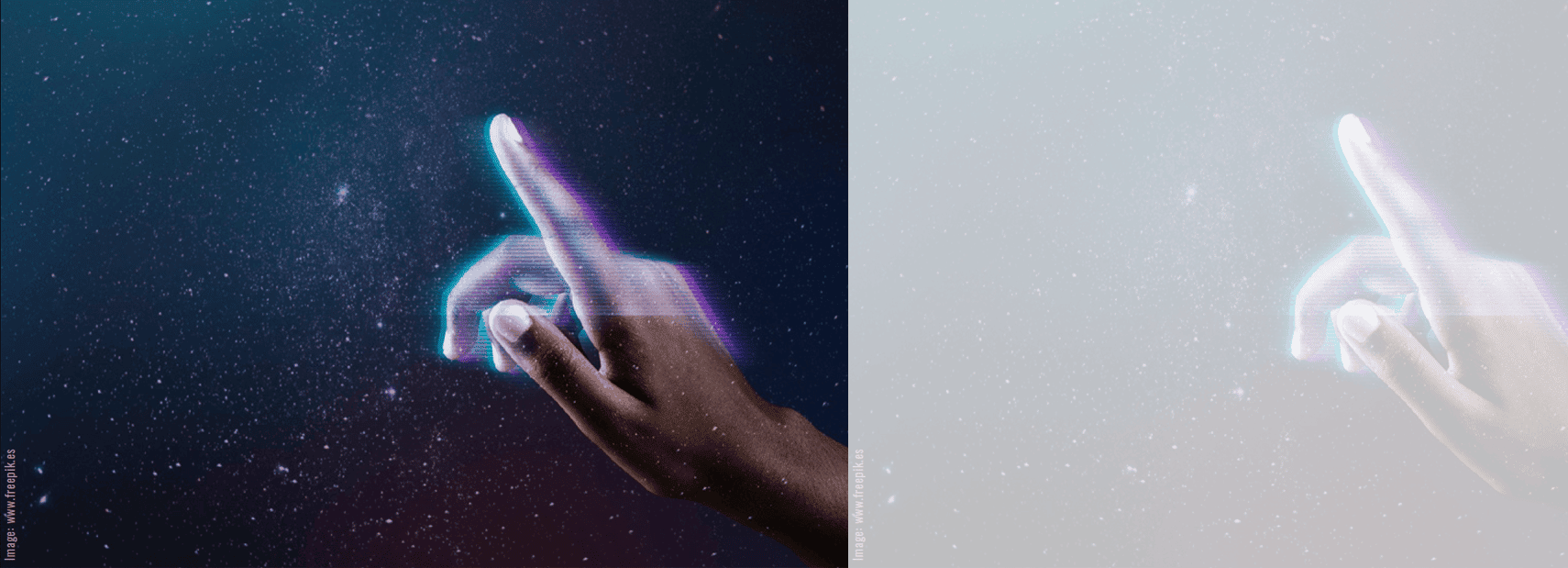
This article is being written to share some of the understanding about the future that is ahead of us generally regardless of whatever age group that you belong to. The future is a journey of the unknown where there are a lot of uncertainities and many expectations that would happen in different sectors across the world. Being in the Future would require you to be able to understand the issues about yourself and the kind of journey that you want to create daily. In the future the first thing that would speak about you as well as things that are around you is how you define your personal branding which has a lot of effect on the way you create your relationship in the society. In the Future every sector in the world would have an effect of technology present in the project which is something you can escape and would be used in telling your stories in your journey.
The future would have a lot of uncomfortable conversations and theory which you must adjust to and not lose the focus in anything that might come in place for you which would require you might have to make sense out of them and see a sense of projection of building a goal between you and the person on whatever matters that is being discussed between two parties. The Future is already making us to understand that we need to know that there must be an open issue towards making sure we are able to create our legacy in every way that we can in the society. In the future be rest assured that everything in life is a process and it would take a lot of time to make sure that things are fixed in their due earnest to achieve the required goal. Age is not a guarantee for you to be able to achieve the future that you desire to create in your career or in your life journey.
When you are making descisions in the future, One thing you must be able to understand is that the future is love and the matter of the Sustainable Development Goals is an important criteria that would be speaking into the future of progress. In conclusion to summarize this article, I would like to share that the future has to do with hope and leadership and we must be ready regardless of our age category to be able to take on the journey with the hope of always willing to learn and always hoping to achieve something by winning from the action that we are able to make every single day of our lives as we progess.
Learning
Oppositional Defiant Disorder

If you are a parent, you may have been given messages simplifying ODD such as: Inconsistent parenting / discipline or the ‘disorder’ is causing your child’s behaviors. We need to shift that thinking with these counterpoints: Many children from a wide variety of backgrounds are diagnosed with ODD. Children from stable families are also diagnosed with ODD. When we look closely, we often see in the child’s early history an emotional vulnerability and tendency towards fight-or-flight reactions to a wide range of triggers, including seemingly innocuous ones. Don’t blame the disorder. As Dr. Stephen Porges explains, fight or flight (oppositional, defiant) behaviors are the result of the subconscious threat detection system (neuroception) falsely sensing danger. This conceptualization involves underlying brain feedback systems. Discipline isn’t always the answer. The way to help children feel safe is not more rules and punishments — which make them feel blamed— but rather personal attunement to helping the child manage these intense stress responses. We need to become investigators as to the range of individual differences that contribute to children’s emotional vulnerability, and help them construct new meanings from the sensations they experience leading to the challenging behaviors. Seek the right professional. Find a therapist who is open to the idea that oppositional behavior can have a variety of causes. Be wary of those who urge ‘behavior management’ in isolation from supportive … Read full text: Read full text:
A Navajo seedkeeper
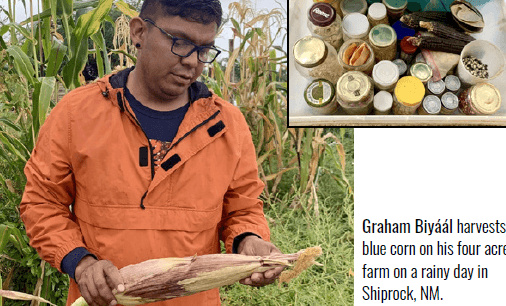
On a rainy day in Shiprock, New Mexico, with slippery clay earth caking our boots, Graham Biyáál takes me on a tour of his four acre corn field where he lives and works. … Biyáál’s blue corn stalks are impressive, standing twelve feet high. Under a tarp protecting him from the rain, he gazes out at his corn field. Jars of colorful seeds sit on the table in front of him. The seeds were given to him by elders and mentors from his Navajo community. The corn stalks Biyáál is growing have a legacy in the Navajo tradition. Biyáál works everyday to preserve his ancestors’ legacy by growing and sharing the crops. He remembers when his grandfather first showed him the legacy of corn. “I remember we were walking around with one of my grandpas, and we went into the cornfield. He picked a corn and he said, ‘you can grow a whole field from this. This is like thousands of years in this corn, and now it’s yours.” During the pandemic, Biyáál started selling his blue corn kernels online with a modest sales goal of selling 12 jars. “The response from that was phenomenal. Within minutes, all of them were sold. There’s a market there,” Biyáál remembers. That was three years ago. Now, he’s selling more products online and connects with a bigger audience through his over 13,000 Twitter followers. … Read full text:
AIU makes a huge contribution to the world by giving new scient ifics the space for original investigations and research. Visit MyAIU Evolution
Neuromaps
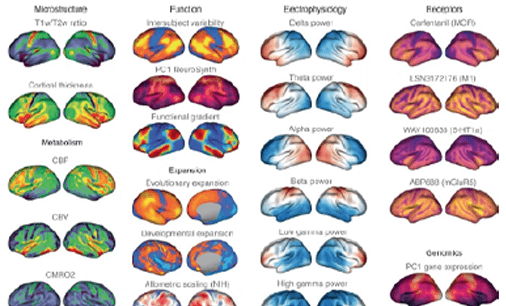
Imaging technologies are increasingly used to generate high-resolution reference maps of brain structure and function. Comparing experimentally generated maps to these reference maps facilitates cross-disciplinary scientific discovery. Although recent data sharing initiatives increase the accessibility of brain maps, data are often shared in disparate coordinate systems, precluding systematic and accurate comparisons. Here we introduce neuromaps, a toolbox for accessing, transforming and analyzing structural and functional brain annotations. We implement functionalities for generating highquality transformations between four standard coordinate systems. The toolbox includes curated reference maps and biological ontologies of the human brain, such as molecular, microstructural, electrophysiological, developmental and functional ontologies. Robust quantitative assessment of map-to-map similarity is enabled via a suite of spatial autocorrelationpreserving null models. Neuromaps combines open-access data with transparent functionality for standardizing and comparing brain maps, providing a systematic workflow for comprehensive structural and functional annotation enrichment analysis of the human brain. …
Read full text:
Dad brain

A new University of Southern California (USC) study of new fathers reveals that their brains undergo measurable changes after their babies arrive. Some involve slight brain shrinkage. It appears that the brain’s changes in new fathers largely affects areas linked to empathy and visual processing. Such changes are believed to contribute to neuroplasticity —the brain’s ability to create and form new synaptic connections to adapt to new experiences. “Becoming a parent entails changes to your lifestyle and your biology,” said Darby Saxbe, the study’s senior author who is a professor of psychology at USC Dornsife College of Letters, Arts and Sciences. “And it requires new skills like being able to empathize with a nonverbal infant, so it makes sense but has not been proven that the brain would be particularly plastic during the transition to parenthood as well.” The study appeared in the journal Cerebral Cortex. The work involved brain scans of 40 expectant fathers —20 in the United States and 20 in Spain. For a comparison, the researchers also studied a group of 17 childless fathers that had been scanned in Spain. The scientists identified that the most significant changes, both in the Spanish and American men, occurred in the cortex — the brain’s outer layer that is involved with attention, planning and executive functioning. … Read full text
Get a better knowledge about our rights and the way we can use them on a daily basis to prevent any abuse or limitations of them. Visit MyAIU Human Rights.
African musicians
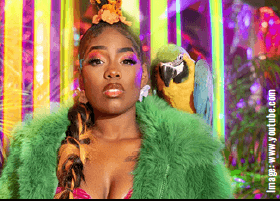
1 Soraia Ramos (Cape Verde). As a Kizomba singer with a pinch of hiphop and a dash of R&B, the 28-year old Portuguese-Cape Verdean singer rose to stardom with the release of her YouTube music video ‘O Nisso Amor.’ 2 Tems (Nigeria). Temilade Openiyi is a rising artist who has gained international recognition. The award-winning R&B Afrobeats singer was featured by popular artists like Drake, Brent Fayaz, Justin Bieber, and Wizkid. 3 Bruce Melodie (Rwanda). The versatile singer, songwriter, dancer, music producer, and actor has great albums like Ntundize and Best of Butera Knowles, as well as his EP, Ikinya. The artist has shown that he has much more to offer the world. Read full text:
Karissa Valencia
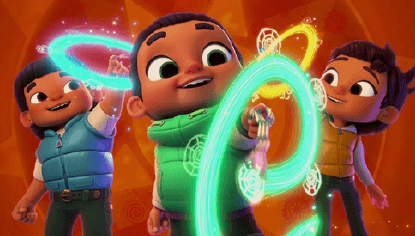
Keeping her culture alive and helping other Native Americans break into Hollywood is what fuels Karissa Valencia, creator and showrunner of the animated Netflix series Spirit Rangers. The fantasy-adventure preschool series is all about celebrating community, nature and the heritage of Native American storytelling. It’s also the kind of show Valencia wishes she would have had as a child. “Growing up on and off the reservation, when I was home it was always so meaningful to me that my family and my tribe were doing everything they could to keep our culture alive and would always share our traditional stories of our land and place,” Valencia, who is half Mexican and half Chumash, told Today via Zoom. “So I grew up hearing stories of trickster coyote and how the condor got its black feathers.” As a young person, however, she had the “feeling of being invisible” in pop culture and the screens. After getting her foot in the door in Hollywood and working with Doc McStuffins creator Chris Nee, who is an executive producer of Spirit Rangers, Valencia decided to create a series for her community. Spirit Rangers follows Chumash/ Cowlitz siblings Kodi (Wačíŋyeya Iwáš’aka Yracheta), Summer (Isis Celilo Rogers) and Eddy Skycedar (Talon Proc Alford) as they help protect the land and the spirits of their California national park. The three kids turn into “spirit rangers,” becoming a grizzly bear cub, red-tailed hawk and turtle to complete their missions. … Read full text
CYBER WHEEL X
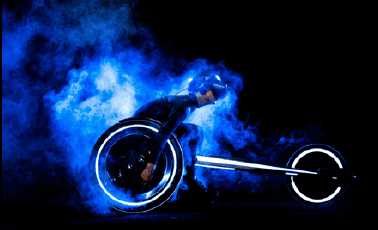
Get on CYBER WHEEL X and experience wheelchair racing and marathon in the VR world. Set in 2100, the courses have been designed according to actual 3D scans of Tokyo. The VR vehicle on the image above is based on the WF01TR racing wheelchair, designed by a team of specialists including Paralympic medalist Tomoya Ito. On the electronically controlled pushrims, you will feel the load change as you climb up and down the slopes in the video. Join races with other players online, or race against simulated top racers. Besides entertainment, CYBER WHEEL X serves as an excellent training tool for wheelchair athletes, recording the right and left wheel speeds and travel distances. CYBER WHEEL was invented and developed by 1→10, Inc. in 2017. In 2019, RDS and 1→10 brought it onto a higher stage of evolution in pursuit of entertainment. Read full text:
Live a better life learning how to keep your body, mind and soul balanced. Visit regularly MyAIU Body / MyAIU Mind / MyAIU Spirit and MyAIU Energy.
Urine ‘therapies’
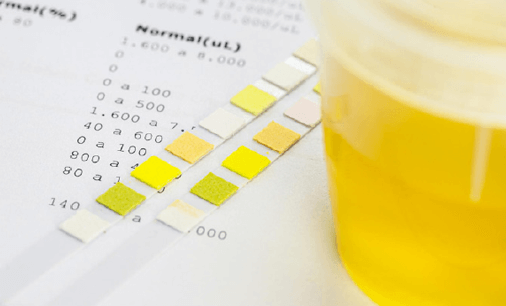
Urine therapy (or urotherapy) is a longstanding practice based on the concept that urine can be drunk, bathed in, or otherwise applied to bring good health or even heal the body of certain ailments. Unusual as it may sound to most people, it’s an idea that persists even today. And like most things of this nature, it has taken on a life of its own online. But is there any evidence urine therapy works? To cut to the chase, no. Urine is waste and should be left excreted from the body. Urine is excreted from the kidneys as they filter blood, keeping what the body needs and removing the waste as urine, which is stored in the bladder until we pee. Urine is 95% water. The remaining ingredients include urea (2%) and creatinine (0.1%), alongside trace elements of various salts and proteins. Urea is a safe organic compound, which occurs naturally when proteins are metabolised. Urea-based formulations can be found in skin and nail softening lotions, helping to improve the skin’s barrier function. However, although urea is present in urine, its concentration is simply too low to offer any therapeutic benefit. … The fact is excreted urine can be quite harmful. There are only a few ways the body can remove waste from its system, and this is done primarily through urine, faeces and sweat. … Read full text:
Brown noise
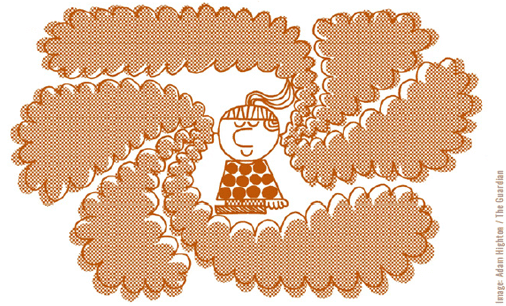
The ‘brown’ in brown noise is a reference to sound that mimics Brownian motion, the movement pollen makes in water, identified by the botanist Robert Brown in 1827. In essence, brown noise is the familiar, staticky sound of white noise (all the audible frequencies simultaneously) but with the low frequency notes augmented and the less pleasant high frequency notes turned down, counteracting the human ear’s natural tendency to hear higher frequencies louder. “Brown noise is a more palatable listening experience because most of the higher frequencies, which can be harsh or distracting to the listener, are removed,” says Giles Williams, the music director of commercial music service Rehegoo. … The staticky sound of white noise has been demonstrated to improve sleep and some cognitive tasks for children with ADHD. … [Brown noise] has fans beyond the ADHD community, including the author Zadie Smith. “I listen to brown noise day and night. I live in this denuded soundscape.” My colleague Nikola discovered brown noise at university. “I would only manage to concentrate in coffee shops. When I couldn’t afford to go to a coffee shop, I tried finding coffee shop sounds on YouTube, and then I found something called ‘brown noise for concentration’. Ever since, I use it every time my mind is all over the place and I need to get work done.” … Read full text:
Find Open Courses and a world of learning granted by AIU at courses.aiu.edu Help others study and change their lives. Visit MyAIU Pledge.
Consumer tech
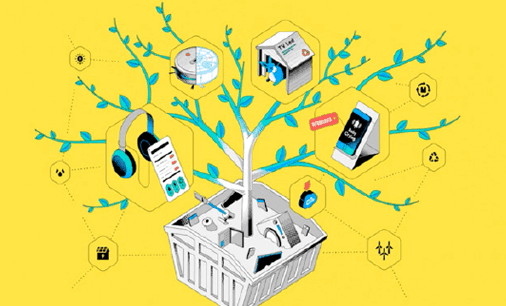
In 2020, the United Nations published a report on electronic waste —and the findings were bracing. The world was producing a record 53.6 million metric tonnes of e-waste per year, the equivalent of over a million Boeing 737s. Comprising everything from video cameras and televisions to vacuum cleaners and dishwashers, this contained $57 billion of raw materials, more than the GDP of many countries —of which only 17.4 percent was recycled. More troubling still, the UN forecast that on current trends, annual e-waste generation will grow to 74.7 million metric tonnes by 2030. This is not only a public health concern, because e-waste contains harmful substances, but it’s a stark environmental issue —and that’s before you even consider the lifetime energy use of all those devices. The UN forecasts that this year, the world’s population will hit eight billion people; 20 years prior, it had just passed six billion. … Recycling might seem to be the silver bullet. Indeed, consumer tech brands are trying to tackle recycling challenges and use ever more ‘closed-loop’ materials. Take Apple, which has created various robots to aid recycling efforts: one model is called Daisy, which can disassemble 200 iPhones per hour; there’s also Dave which recovers rareearth magnets, tungsten and steel; and Taz, which reclaims magnets from audio modules. … But recycling can’t be the whole story – solving this problem will need a multifaceted solution. …
Read full text:
Climate profiteers
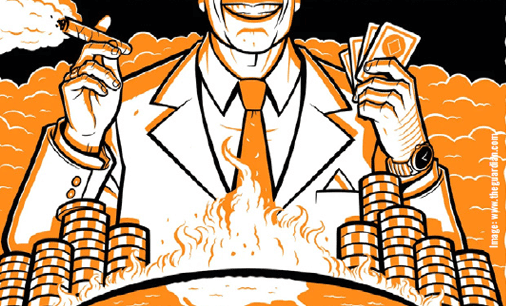
I was a kid when the invasions of Iraq and Afghanistan began, but I could see what was happening. Corporations were cashing in however possible: selling beans, bullets and band-aids, signing lucrative construction contracts for new military bases, replacing public employees with private contractors from combat units to the VA hospital, and capitalizing on opportunities to make big money in reconstruction and oil. Now, as an environmental activist and author, I apply the same logic to the climate crisis. There are surprising parallels between the ‘war on terror’ in Iraq and Afghanistan and climate change. Both are characterized by public fear, existential risks, geopolitical power struggles, manipulation of public opinion, and huge sums of money. As global warming intensifies, trillions of dollars in government subsidies and consumer spending are flowing to makers of ‘green technology.’ Car manufacturers from Ford to Volkswagen have announced plans to stop making gas and diesel cars, and instead manufacture only electric vehicles. And as more intermittent wind and solar is added to electricity grids, utilities are investing in massive, warehouse-sized battery banks to stabilize power supplies. All this is driving skyrocketing demand for raw materials such as lithium, graphite, cobalt, nickel, and rare earth metals. … Read full text:
Find support for your own unique art and design projects, or support other creative projects at MyAIU Research
Patients with disabilities
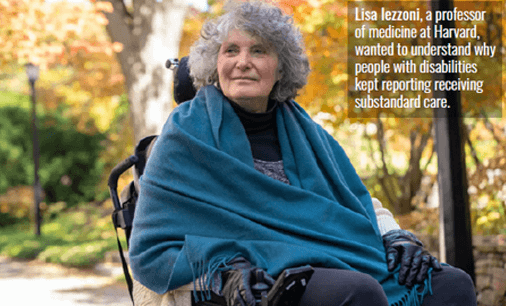
Dr. Lisa Iezzoni, a professor of medicine at Harvard, has heard the same story during research with hundreds of people who have disabilities: Health care that was substandard. Medical offices that were not accessible. Doctors who did not treat them with respect. … She proposed a study that gathered doctors, a mix of primary care physicians and specialists recruited from across the US, into three focus groups on video conferences. Protected by anonymity the groups of eight to 10 doctors began to talk. At first, they were guarded, but as the sessions that Dr. Iezzoni moderated wore on, they began to speak more frankly. In their Zoom meetings, they could not see that Dr. Iezzoni was seated in a wheelchair. The study’s findings were published in the journal Health Affairs. … Some doctors said their office scales could not accommodate wheelchairs, so they had told patients to go to a supermarket, a grain elevator, a cattle processing plant or a zoo to be weighed … “Seeing patients at a 15-minute clip is absolutely ridiculous,” one doctor said. “To have someone say, ‘Well we’re still going to see those patients with mild to moderate disability in those time frames’ —it’s just unreasonable and it’s unacceptable to me.” … One doctor said he had hired a sign language interpreter for a deaf patient, a decision which cost so much that he lost $30 each time the patient visited. A specialist in one focus group said disabled patients took too much time, adding that they were “a disruption to clinic flow.” …
Read full text:
Paramilitary groups
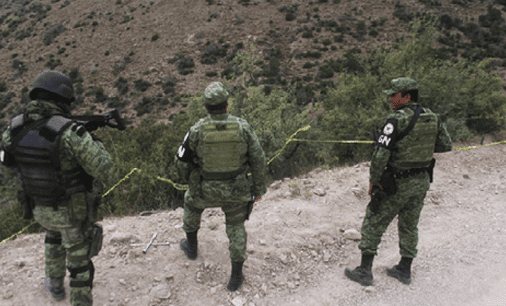
Saving whales
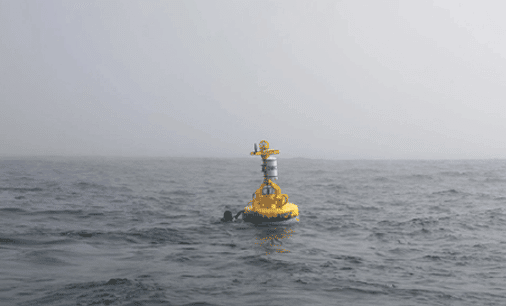
Fran washed ashore in August, some 25 miles south of the Golden Gate Bridge. The beloved and much-photographed female humpback whale had a broken neck, most likely the result of being hit by a ship. This latest instance of oceanic roadkill increased the tally of whales killed by ships near San Francisco this year to four. The true death toll is likely to be much higher as whale carcasses often sink to the sea floor. Scientists and conservationists are trying to drive that number to zero. On Wednesday [Sept. 14], Whale Safe, an AI-powered detection system, began operating around San Francisco Bay. Its goal is to warn large ships in the area’s waters when whales are nearby. About 25 miles out to sea from the Golden Gate on Monday [Sept 19] afternoon, a yellow buoy bobbed not far from the great white shark hunting grounds of the Farallon Islands. On a boat close by called the Nova, Douglas McCauley, director of the Benioff Ocean Initiative at the University of California, Santa Barbara, donned a wet suit and snorkel and jumped into the brine to give the buoy some TLC before its big day. The buoy, tethered to an underwater microphone, is an integral part of Whale Safe. … Whale Safe, which has been operating in the Santa Barbara Channel since 2020, provides near-real-time data on the presence of whales and sends out alerts to mariners, shipping companies and anyone else who signs up. …
Read full text:
Alaska’s new lakes
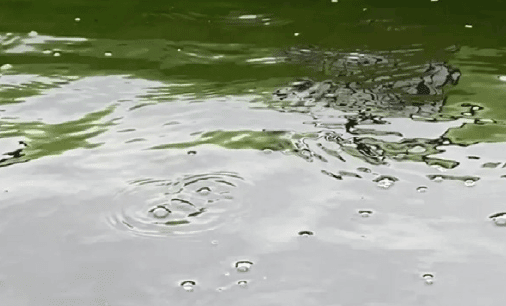
Thawing ice caps are creating brand new lakes in Alaska, but unlike the rest of the state’s gorgeous scenery, tourists probably won’t be flocking to see them anytime soon. Known as thermokarst lakes, or thaw lakes, they form when permafrost thaws due to rising temperatures collapsing the ground and forming a sinkhole. Water eventually fills the newly formed hole, creating a lake that’s teeming with methane-belching bacteria. … Methane is a potent greenhouse gas, so the lakes are further fueling the climate crisis that created them in the first place. NASA’s Arctic Boreal Vulnerability Experiment (ABoVE) project is studying the formation of these thermokarst lakes to see how they might be impacting the wider environment. Katey Walter Anthony, an ecologist on the project, blogged about the facts of the matter. Permafrost is melting all over the world at an extremely high rate, and at Big Trail Lake, the bacteria are producing such high quantities of gas that there are visible bubbles rising to the lake’s surface. As the permafrost melts and bacteria re-animate, they belch greenhouse gases that waft into the atmosphere, trapping heat and contributing to even more climate change —and methane is more than 25 times as potent as carbon dioxide at trapping heat. … …
Read full text:
Find Open Courses and a world of learning granted by AIU at courses.aiu.edu Help others study and change their lives. Visit MyAIU Pledge.
Campus
The unnatural future of Physics

It has never played well with others; it’s absurdly weak compared with the other movers and shakers of the cosmos —electromagnetism and nuclear forces. A tiny magnet can lift a large metal spoon off the ground against the pull of gravity of the entire Earth. No one knows why. (Gravity even speaks a different language —generally smooth geometry— as opposed to the buzzing quantum probability-speak native to other forces.) Natural means to be expected, explainable by, duh, natural causes. My hair turned white because I’m old. That’s natural. If it turned bright pink of its own accord (a good look for me, I think), that would be highly unnatural, and I’d feel compelled to root around (so to speak) for a cause. These days, physicists are being forced to confront the “naturalness problem” big time, because it’s been 10 years since the Higgs boson was discovered, and despite global-scale efforts using massive machines and master minds, the beast still stubbornly resists naturalization. Like gravity, the Higgs is weirdly wimpy. No one knows why.
The tried-and-true cure for unnaturalness has been finding a hidden player that explains the problem away. Say your seesaw refuses to balance; one side always pops up with no apparent cause. Then some clever theorists predict that there’s an invisible boulder weighing one side down. Their calculations are so accurate that experimenters know just where to look. Eventually, they confirm the rock’s existence. Collective sighs of relief. Cheers and applause. Nobel prizes. To be natural —to be clear— the new thing has to balance perfectly; no twiddling of any dials (or finetuning, as physicists call it). Not like naturalizing new citizens so they assimilate with the natives or “naturalizing” flower bulbs to settle into new conditions. Naturalness in physics means no intervention. It means exact to a gazillion decimal points, wholly of its own accord. Despite the need for such precision, this fix has worked so well so often in physics, it’s hard to imagine it won’t keep happening. Find the hidden finger on the scale and symmetry returns, harmony’s restored, inconvenient truths vanish. As a bonus, physics evolves, broadens, embraces new stuff. The Higgs raised high hopes for a repeat. But there’s been no second coming. No boulders have turned up.
To get a sense of what went wrong, I called on a physicist who himself is somewhat unnatural —a “deviant by default,” he calls himself. Not just because he’s Black, or went to a Bronx high school with a 60 percent drop-out rate, or because he plays jazz sax, is highly influenced by hip hop, and collaborates with the likes of Jaron Lanier (they’re both founding scientists of the Universal Hip Hop Museum). He’s also unusual because he’s multilingual within physics itself, able to converse with sometimes hostile camps, such as string theory and loop quantum gravity.
It’s a little hard to think of Stephon Alexander as an outsider. He runs his own eponymous lab at Brown, where his group explores the origin and structure of the universe, dark matter, the reasons matter exists at all. The Simons Foundation —which prides itself on furthering “breakthrough” science— recently awarded a million-dollar grant to support his work. He was president of the National Society of Black Physicists and wrote two well-received books: Fear of a Black Universe: An Outsider’s Guide to the Future of Physics and The Jazz of Physics: The Secret Link Between Music and the Structure of the Universe. Currently, Stephon’s very excited about the Higgs. “I remember as a student thinking this was a contraption,” he says, “a theoretical trick that you put in to make something work and then boom!” The newly revealed Higgs was exactly as predicted. Also entirely unacceptable. Its mass is unnaturally small compared to particles that should be of similar scales. The preference for the natural in physics is tied to the belief in unification —the idea that fundamental physical stuff should all be part of the same big picture. “The electron has to talk to gravity, so why this huge gap?” Stephon says. “These things should know about each other. They should have a common origin.” This approach has worked before: Electricity and magnetism are now understood as facets of electromagnetism. Matter is concentrated energy. E = mc2.
The Higgs is (so far) unique. It’s a measurable shard of nothingness —“a fragment of vacuum,” as the Nobel Prizewinning physicist Frank Wilczek described it. The Higgs field (which materializes as a Higgs particle if sufficiently tweaked) is a non-zero spacepervading something that remains after everything else is removed. It’s as empty as our void can get. Yet for “nothing,” it does quite a lot. For one thing, it gives particles mass, some more than others. Light particles (photons of light, for example) slip right through, shrug it off without the slightest hesitation. Heavier particles get bogged down; to them, Higgs behaves like a room full of fans who won’t let you through without a selfie. More resistance equals more inertia equals more mass. This unseen structure, current theories suggest, froze into place soon after the newborn universe emerged from a frenzied, superheated start, then settled naturally to a lower-energy state. That process destroyed the perfect sameness of hot, melted nothing, just as freezing imposes structure on water. The Higgs condensed (it’s officially a “condensate”) out of the first formless nothing like moist air condensing on a cool window. And because it’s intrinsic to everything, the Higgs is potentially a portal connecting a tangle of other unsolved mysteries: What is the nature of dark matter? Why is there matter at all? What’s up with the accelerating expansion of the universe? Are they all part of the same cosmic puzzle? The Higgs promised paths forward. So far, most have led nowhere.
Physics gets stuck, Stephon thinks, when it forgets —or ignores— its roots. The heroes of modern physics were master improvisers; they embraced wild imaginings as a tool. That was necessary. “Each time we get into a log jam,” wrote Richard Feynman, “it is because the methods we are using are just like the ones we have used before … A new idea is extremely difficult to think of. It takes fantastic imagination.” They found inspiration in dreams, art, philosophy. They considered the role of consciousness, respected aesthetics as well as logic. They searched for meaning beyond the math. The battles were epic: Einstein said that if classical notions of cause and effect had to be renounced, he would rather be a cobbler or even work in a gambling casino than be a physicist. Niels Bohr called Einstein’s attitude appalling and accused him of high treason. Erwin Schrödinger famously complained: “If one has to stick to this damned quantum jumping, then I regret having ever been involved in this thing.” “How interesting,” Stephon says now, “that those inquiries were written out of the formal education when I was learning. That was the juice that led to quantum mechanics.”
As a sax player, Stephon sees a natural link between physics and jazz, which also thrives on sometimes wild improvisation, riffing, musical conversation. John Coltrane was a huge fan of Einstein’s theories; one of his last albums, Interstellar Space, was inspired and informed by general relativity. Perhaps more surprising, Stephon thinks growing up in a mecca of hip hop helped him become a physicist. “Hip hop explained to me why I work the way I do,” he says. “There are elements in the hip hop culture that are really important to science.” A critical element was the cypher: A circle would form, and rappers would rhyme in turn, improvising verses on a shared beat. “That’s how rap music happened,” Stephon says. “This was a huge influence as a young person. Everyone’s voice is heard. It’s not about you. You are serving that thing that’s bigger than you. It’s the cypher. That’s generative to all creativity. Physicists could learn something from that.” He held postdocs in physics departments that were re-creating something like the cypher. The difference was that only people considered “in the club” were allowed a turn. Despite even good intentions, in practice, physicists who seem “unnatural” —for example, Black people, women— are often excluded. Assumptions about what’s natural are deeply rooted, often unconscious. Once, when I was profiling one of the top physicists in the world —a woman— an editor at the fancy publication I was writing for kept changing her quotes, the way she spoke. “Physicists don’t talk like that,” the editor said. The fact that she was a physicist, presenting somewhat differently from the usual male model, didn’t seem to make a difference. Stephon sounds like the Bronx native he is. Part of me understands. I met Stephon at an exclusive meeting of physicists at Aspen, and I was taken aback by the presence not only of Black scientists but also of women. The public face of physics is white and male; the science media rarely present counterexamples. So yes, I was surprised.
It reminded me of a time I stepped onto a diving board at a tennis club pool. “Grownups aren’t allowed up there,” a young boy told me. At first I didn’t understand. Then I looked around. Other women of my age were sitting around tables in whites drinking gin and tonics. I was “unnatural.” Often, “unnatural” translates as “not allowed,” even if nobody says so out loud. To the extent that inclusion in science means welcoming “unnatural” voices and diverse perspectives, Stephon’s all for it. “But there are rules,” he says. Claims that physics is somehow white supremacist infuriate him, because their message is “it’s not for us.” “This is very personal and powerful for me. I don’t need people to tell me about disparities.” Claims of white supremacist science are “dangerously misinformed.” The universe is naturally what it is. “Schrödinger’s equation is the same for everyone,” Stephon says. “It would be the same for an alien.” His 6,000-student Bronx high school didn’t offer the math that physics requires. But along with a few other students, he was given a chance to take calculus at the City College of New York. “If I’d not had that opportunity, I could not have succeeded.” The influence of hip hop went beyond the cypher. While the public face of hip hop often conjured “gangsters and hooligans,” Stephon says, “that was not my hip hop.” Hip hop culture includes a lot of different elements, along them DJing, break dancing, graffiti, rapping. (Also gangsterism.) “But there’s a fifth element called knowledge. I was coming from a place where hip hop was about dropping science. We had a saying: Let the knowledge be born!”
While it’s hard to see Stephon as much of misfit anymore, the Higgs still sticks out. It’s 100 million billion times less massive than it should be. “We don’t like ridiculous numbers,” Stephon says. And so Stephon, along with other physicists, is wondering whether this whole naturalness thing even makes sense anymore. “One interesting thing about the Higgs is you’re not asking a question about a symmetry or the math; you’re really asking about the physics,” he says. “The Higgs is a physical thing; it actually participates in mass. It’s necessary. But the question is: What is the Higgs?” It could be a composite of several “natural” particles; it could a member of a much larger family. It could even be ridiculous. “Imagine if naturalness was never a thing!?” Stephon says. “You create the problem and you realize the problem wasn’t there to begin with. My big dream would be that this issue of naturalness was never there. That’s my fantasy.” The universe has already proven itself ridiculous in the extreme, mind-bending, space-time-bending, quantum foam shredding space and time to bits in our brains as well as the innards of black holes, a vacuum so overstuffed with energy it appears to be pushing galaxies apart. Yet this supremely weirdo habitat provides life support not just for us but also for fishing spiders, hairy frogs, goblin sharks. Why would we even think that the puny 3-pound bundle of neurons we carry around in our skulls could comprehend any of it? The fact that we do, you might say, is unnatural in and of itself. Maybe the trick is to let nature take care of naturalness —and let scientists be as out there as they need to be to understand it.
Read full text:
Help others study and change their lives. Visit MyAIU Pledge. Learn how to have a better financial control. Visit MyAIU Money.
Recycled inner tube wallet.

A great slimline wallet designed for folded notes, plenty of cards and a small zipped coin section for your loose change. www.cycleofgood.com
DJI Mini 3 Pro.
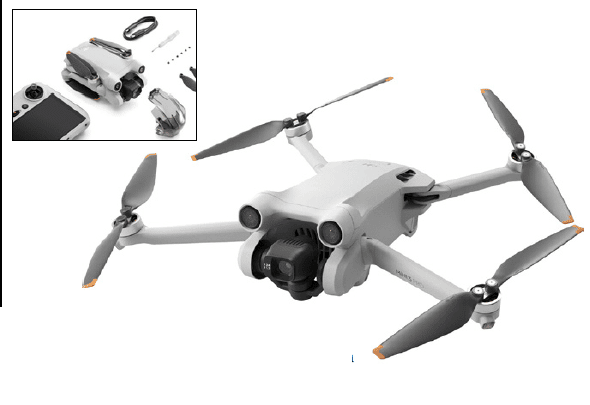
A lightweight drone that you can chuck in your bag. It offers advanced obstacle avoidance features, a rotating lens so you can film portrait or landscape, 4K video, smart flying features like automatic tracking and the ability to follow a subject. www.dji.com
Keith Haring Lovebox messenger color & photo.

Made of bamboo with a lacquered finish, the Lovebox connects to WiFi so you can send not only messages but also photos from anywhere in the world from your smart device. store.moma.org
Noam Chomsky. (1928–).
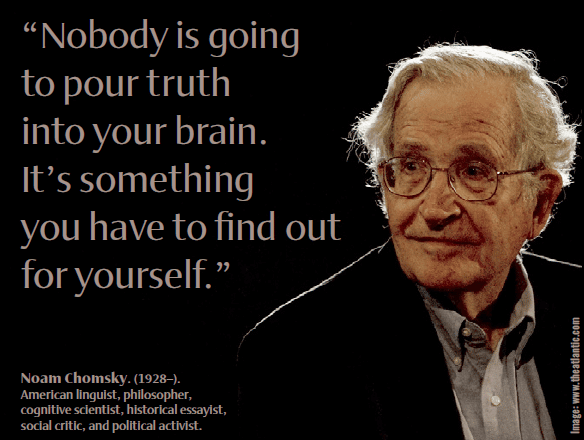
1 Soraia Ramos (Cape Verde). As a Kizomba singer with a pinch of hiphop and a dash of R&B, the 28-year old Portuguese-Cape Verdean singer rose to stardom with the release of her YouTube music video ‘O Nisso Amor.’ 2 Tems (Nigeria). Temilade Openiyi is a rising artist who has gained international recognition. The award-winning R&B Afrobeats singer was featured by popular artists like Drake, Brent Fayaz, Justin Bieber, and Wizkid. 3 Bruce Melodie (Rwanda). The versatile singer, songwriter, dancer, music producer, and actor has great albums like Ntundize and Best of Butera Knowles, as well as his EP, Ikinya. The artist has shown that he has much more to offer the world. Read full text:
BACHELOR’S DEGREE in Banking and Finance
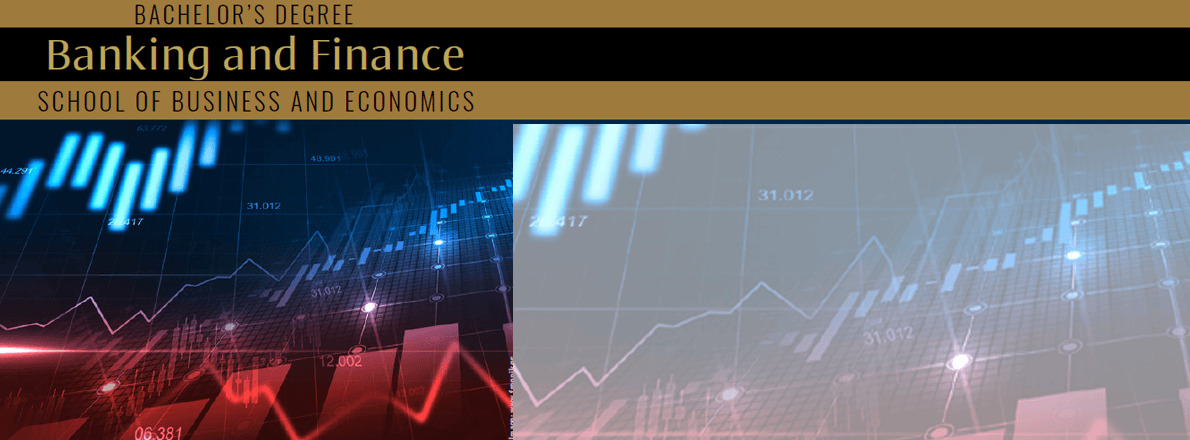
The Bachelor of Banking and Finance (BS) program objective is to prepare students to think critically and finding new ways to improve the industry. Student learns to communicate effectively on all levels and acquire leadership skills in the banking industry to become an initiator of change by making complex and difficult decisions using modern finance, marketing and management analysis methods. The Bachelor of Banking and Finance (BS) program is offered online via distance learning. After evaluating both academic record and life experience, AIU staff working in conjunction with Faculty and Academic Advisors will assist students in setting up a custom-made program, designed on an individual basis. This flexibility to meet student needs is seldom found in other distance learning programs. Our online program does not require all students to take the same subjects/ courses, use the same books, or learning materials. Instead, the online Bachelor of Banking and Finance (BS) curriculum is designed individually by the student and academic advisor. It specifically addresses strengths and weaknesses with respect to market opportunities in the student’s major and intended field of work. Understanding that industry and geographic factors should influence the content of the curriculum instead of a standardized one-fits-all design is the hallmark of AIU’s unique approach to adult education. This philosophy addresses the dynamic and constantly changing environment of working professionals by helping adult students in reaching their professional and personal goals within the scope of the degree program.
Orientation Courses:
Communication & Investigation (Comprehensive Resume)
Organization Theory (Portfolio)
Experiential Learning (Autobiography)
Academic Evaluation (Questionnaire)
Fundament of Knowledge (Integration Chart)
Fundamental Principles I (Philosophy of Education)
Professional Evaluation (Self Evaluation Matrix)
Development of Graduate Study (Guarantee of an Academic Degree)
Treasury Management
Futures and Options Markets
Property Investment
Banking Law
Macroeconomics
Capital Markets
Commercial Banking and Finance
Financial Management
Portfolio Management
Lending Decisions
Corporate Governance
Equity Markets
Personal Financial Planning
Money Market Operations
International Banking and Finance
Investment Banking
Monetary Theory and Policy
Good communication skills
Able to think clearly and act quickly
Able to stay calm in difficult situations
Technical aptitude
Bachelor Thesis Project
MBM300 Thesis Proposal
MBM302 Bachelor Thesis (5,000 words)
aiu.edu/apply-online.html
Pioneer Plaza/900 Fort Street Mall 410
Honolulu, HI 96813
800-993-0066 (Toll Free in US)
808-924-9567 (Internationally)
Each graduate is encouraged to publish their research papers either online in the public domain or through professional journals and periodicals worldwide.
Contact us to get started
Each graduate is encouraged to publish their research papers either online in the public domain or through professional journals and periodicals worldwide
aiu.edu/apply-online.html
Pioneer Plaza/900 Fort Street Mall 410
Honolulu, HI 96813
800-993-0066 (Toll Free in US)
808-924-9567 (Internationally)
About Us

Accreditation
Atlantic International University offers distance learning degree programs for adult learners at bachelors, masters, and doctoral level. With self paced program taken online, AIU lifts the obstacles that keep professional adults from completing their educational goals. Programs are available throughout a wide range of majors and areas of study. All of this with a philosophically holistic approach towards education fitting within the balance of your life and acknowledging the key role each individual can play in their community, country, and the world.
Atlantic International University is accredited by the Accreditation Service for International Schools, Colleges and Universities (ASIC). ASIC Accreditation is an internationally renowned quality standard for colleges and universities. Visit ASIC’s Directory of Accredited Colleges and Universities. ASIC is a member of CHEA International Quality Group (CIQG) in the USA, an approved accreditation body by the Ministerial Department of the Home Office in the UK, and is listed in the International Directory of the Council for Higher Education Accreditation (CHEA). The University is based in the United States and was established by corporate charter in 1998.
Our founding principles are based on the United Nations Universal Declaration of Human Rights; per article 26, AIU believes that Higher Education is a Human Right. The University has implemented a paradigm shifting educational model for its academic programs that have allowed it to move closer to this goal through the self-empowerment of its students, decentralization of the learning process, personalized open curriculum design, a sustainable learning model, developing 11 core elements of the Human Condition within MYAIU, and utilizing the quasi-infinite knowledge through the use of information technology combined with our own capacity to find solutions to all types of global issues, dynamic problems, and those of individuals and multidisciplinary teams. Due to these differentiations and the university’s mission, only a reputable accrediting agency with the vision and plasticity to integrate and adapt its processes around AIU’s proven and successful innovative programs could be selected. Unfortunately, the vast majority of accrediting agencies adhere to and follow obsolete processes and requirements that have outlived their usefulness and are in direct conflict with the university’s mission of offering a unique, dynamic, affordable, quality higher education to the nontraditional student (one who must work, study what he really needs for professional advancement, attend family issues, etc.). We believe that adopting outdated requirements and processes would impose increased financial burdens on students while severely limiting their opportunities to earn their degree and advance in all aspects. Thus, in selecting the ASIC as its accrediting agency, AIU ensured that its unique programs would not be transformed into a copy or clone of those offered by the 10,000+ colleges and universities around the world. Since ASIC is an international accrediting agency based outside the United States, we are required by statute HRS446E to place the following disclaimer: ATLANTIC INTERNATIONAL UNIVERSITY IS NOT ACCREDITED BY AN ACCREDITING AGENCY RECOGNIZED BY THE UNITED STATES SECRETARY OF EDUCATION. Note: In the United States and abroad, many licensing authorities require accredited degrees as the basis for eligibility for licensing.

In some cases, accredited colleges may not accept for transfer courses and degrees completed at unaccredited colleges, and some employers may require an accredited degree as a basis for eligibility for employment. Potential students should consider how the above may affect their interests, AIU respects the unique rules and regulations of each country and does not seek to influence the respective authorities. In the event that a prospective student wishes to carry out any government review or process in regards to his university degree, we recommend that the requirements of such are explored in detail with the relevant authorities by the prospective student as the university does not intervene in such processes. AIU students can be found in over 180 countries, they actively participate and volunteer in their communities as part of their academic program and have allocated thousands of service hours to diverse causes and initiatives. AIU programs follow the standards commonly used by colleges and universities in the United States with regards to the following: academic program structure, degree issued, transcript, and other graduation documents. AIU graduation documents can include an apostille and authentication from the US Department of State to facilitate their use internationally.
The AIU Difference
It is acknowledged that the act of learning is endogenous, (from within), rather than exogenous.
This fact is the underlying rationale for “Distance Learning”, in all of the programs offered by AIU. The combination of the underlying principles of student “self instruction”, (with guidance), collaborative development of curriculum unique to each student, and flexibility of time and place of study, provides the ideal learning environment to satisfy individual needs.
AIU is an institution of experiential learning and nontraditional education at a distance. There are no classrooms and attendance is not required.
The AIU Difference
MISSION:
To be a higher learning institution concerned about generating cultural development alternatives likely to be sustained in order to lead to a more efficient administration of the world village and its environment; exerting human and community rights through diversity with the ultimate goal of the satisfaction and evolution of the world.
VISION :
The empowerment of the individual towards the convergence of the world through a sustainable educational design based on andragogy and omniology.
Organizational Structure
Dr. Franklin Valcin
President/Academic Dean
Dr. Ricardo Gonzalez
Chief Operation Officer
and MKT Director
Dr. Miriam Garibaldi
Viceprovost for Research
Dr. Ofelia Miller
Director of AIU
Juan Pablo Moreno
Director of Operations
Paula Viera
Director of
Intelligence Systems
Felipe Gomez
Design Director / IT Supervisor
Daritza Ysla
IT Coordinator
Nadeem Awan
Chief Programming Officer
Dr. Jack Rosenzweig
Dean of Academic Affairs
Dr. Edward Lambert
Academic Director
Dr. Ariadna Romero
Advisor Coordinator
Nadia Gabaldon
Academic Coordinator
Jhanzaib Awan
Senior Programmer
Leonardo Salas
Human Resource Manager
Benjamin Joseph
IT and Technology Support
Rosie Perez
Finance Coordinator
Chris Soto
Admissions Counselor
Dr. José Mercado
Chief Executive Officer
Chairman of the Board of Trustees
Linda Collazo
Logistics Coordinator
Irina Ivashuk
Alumni Association
Coordinator
Clara Margalef
Director of Special Projects
of AIU
David Jung
Corporate/Legal Counsel
Bruce Kim
Advisor/Consultant
Thomas Kim
Corporate/
Accounting Counsel
Camila Correa
Quality Assurance Coordinator
Maricela Esparza
Administrative Coordinator
Chris Benjamin
IT and Hosting Support
Mayra Bolivar
Accounting Coordinator
Roberto Aldrett
Communications Coordinator
Giovanni Castillo
IT Support
Jaime Rotlewicz
Dean of Admissions
Dr. Mario Rios
Academic Advisor
Michael Phillips
Registrar’s Office
Rene Cordon
Admissions Support
Jenis Garcia
Admissions Counselor
Ricardo González, PhD
Provost
Dr. Silvia Restorff
Academic Advisor
Dr. Prakash Menon
Academic Advisor
Carlos Aponte
Telecommunications
Coordinator
Dr. Nilani Ljunggren De Silva
Academic Advisor
Dr. Scott Wilson
Academic Advisor
Dr. Mohammad Shaidul Islam
Academic Advisor
Dr. Edgar Colon
Academic Advisor
Deborah Rodriguez
Academic Tutor Coordinator
Cyndy Dominguez
Academic Tutor Coordinator
Kinmberly Diaz
Admissions Support Tutor
Amalia Aldrett
Admissions Coordinator
Sandra Garcia
Admissions Coordinator
Jose Neuhaus
Admissions Support
Junko Shimizu
Admissions Coordinator
Veronica Amuz
Admissions Coordinator
Alba Ochoa
Admissions Coordinator
Contact Us
Atlantic International University
900 Fort Street Mall 905 Honolulu, HI 96813
Quick Links
Home | Spanish | Online Courses | Available Courses | Vrtual Campus | Career Center | Available Positions | Ask Career Coach | The Job Interview | Resume Writing | Accreditation | Areas of Study | Bachelor Degree Programs | Masters Degree Programs | Doctoral Degree Programs | Course & Curriculum | Human Rights | Online Library | Representations | Student Publication | Sponsors | General Information | Mission & Vision | School of Business and Economics | School of Science and Engineering | School of Social an Human Studies | Media Center | Admission Requirements | Apply Online | Tuition | Faculty & Staff | Distance Learning Overview | Student Testimonials | Frequently Asked Questions | Register for Program | Privacy Policy | FAQ







